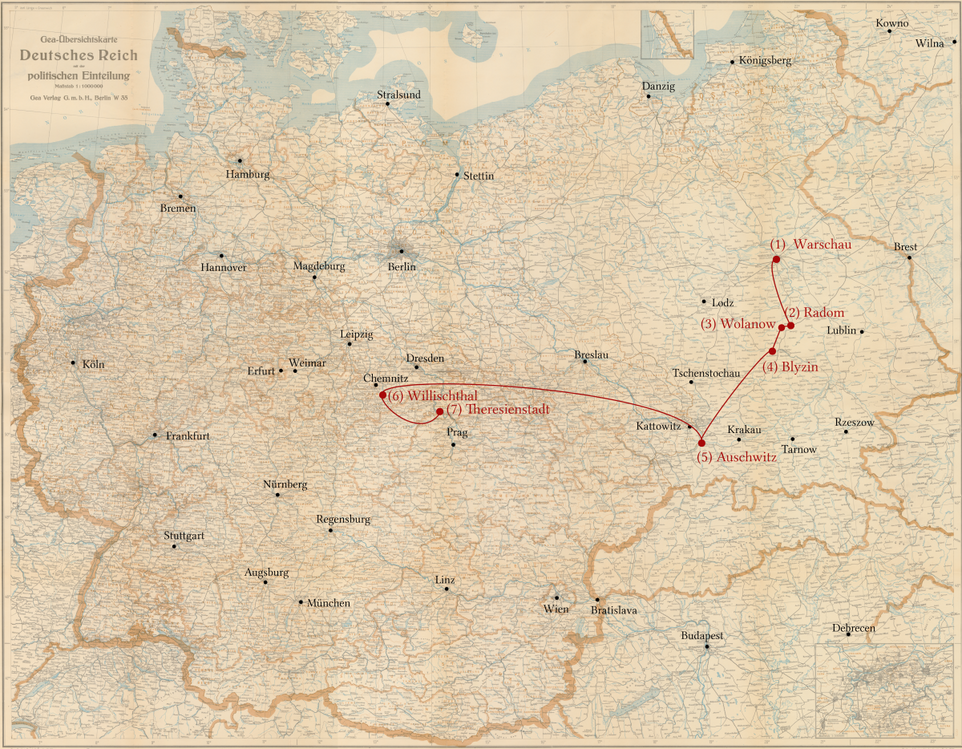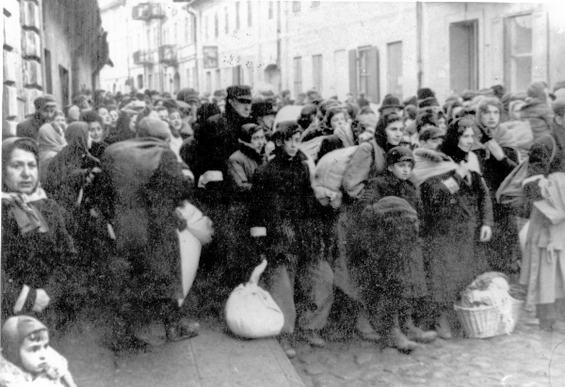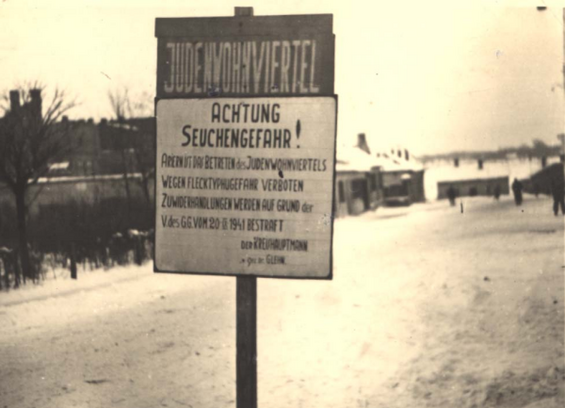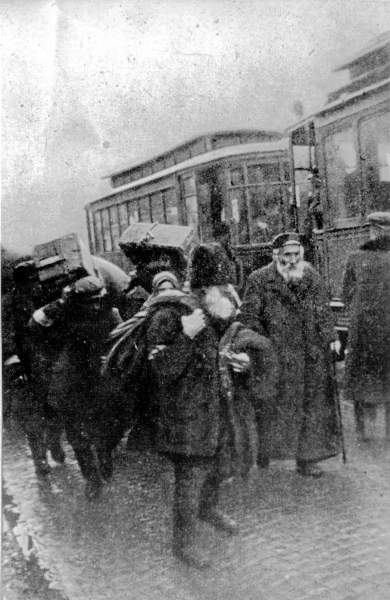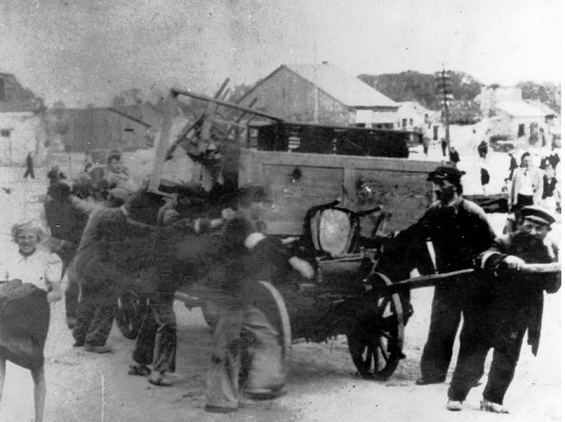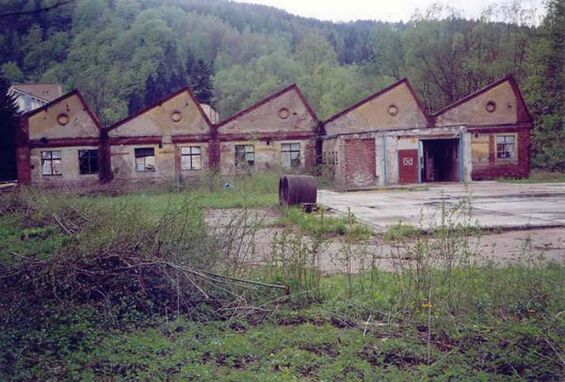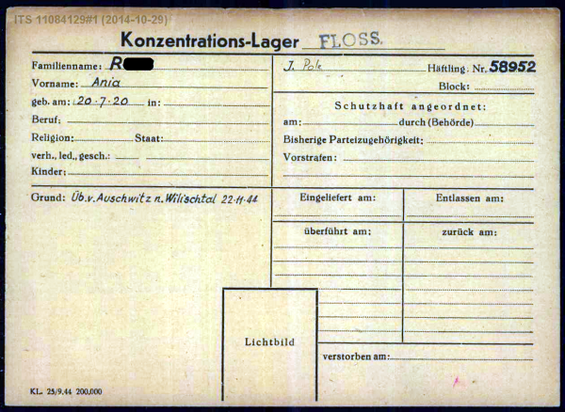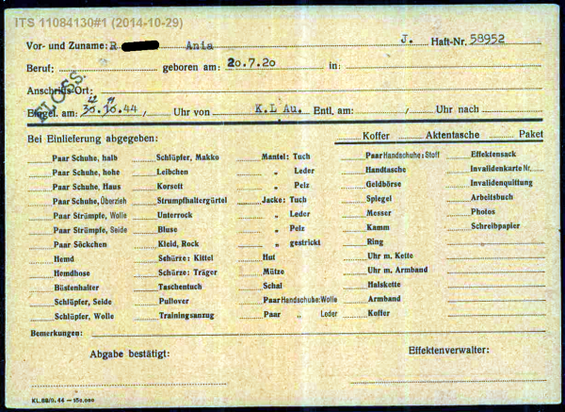The Biography of Anna Berkovicz, née Roza, Warsaw
Short biography and stations of her persecution
- Born on 20. 7. 1920 in Warsaw, died on 31.8.1994
- 1927 to 1934 elementary school, learned to sew
- November 1940 to April 1941 Warsaw ghetto
- April 1941 to July 1943 Radom ghetto, forced labor camp Radom-Wolanow
- July 1943 to August 1944 Forced labor camp Lublin-Majdanek concentration camp/Blizyn subcamp
- August 1944 to November 1944 Auschwitz concentration camp
- 22.11.1944 to 14.4.1945 Flossenbürg concentration camp/Wilischthal subcamp
- 14. 4. 1945 to 5. 5. 1945 Transport
- 5.5.1945 to 9.5.1945 Theresienstadt ghetto
- 1945 to 1949 Displaced Persons Camp Stuttgart
- 1949 - 1958 Israel, then USA
Anna Berkowicz lost her parents and her brother. She was 15 years old when her persecution began.
Before the War
I am making this affidavit in connection with my application for compensation for damage to my body and health. Before the outbreak of persecution, I lived with my parents and my brother in Warsaw at 49 Kruta Street. I was a strong, healthy young girl. After finishing elementary school, I stayed at home and learned to sew, but I was not employed. My father was a weaver by trade and earned a good living.
Source: Affidavit
1939/1940: Warsaw/Warsaw Ghetto
At the beginning of the German occupation of Poland in September 1939, she was forced into the ghetto with family members at the beginning of 1940, spent several months there and was required to do cleaning work every day.
Source: Expert opinion by Heinz Wennert M.D. 1968
April 1941 to July 1943: Radom, Radom Ghetto, Forced Labour Camp Radom-Wolanow
| Forced labor camps for Jews in the "Generalgouvernement" | |
|---|---|
| Place | Wolanów |
| Area | General Government, Radom District (1939-1945) |
| Opening | 1940 |
| Closing | July/August 1943 |
| Deportations | The prisoners were "transferred" to the forced labor camps for Jews in Radom, Blizyn and Starachowice |
| Prisoners | |
| Gender | Women |
| Employment of the prisoners at | Kuhlmann company, Hanover; Wilhelm Hölscher company; Hanover; von der Wetter company |
| Type of work | Construction work, barrack construction, track construction, work in the tailors', shoemakers' and carpenters' workshops |
| Source: deutschland-ein-denkmal.de | |
She then ran away and went to live with relatives in Radom, where she temporarily did some work as a non-Jewish Polish woman, but was then sent to the ghetto with relatives there. She was then sent to the forced labor camp Wolanow-Radom, where she had to work as a cleaning girl for the soldiers. She contracted typhus in this camp and was very ill for 2 or 3 weeks. Once a dog was set on her, it bit her on the right leg and the wound had to be cut. They wanted to amputate her leg, but Client refused with all her might. She was also raped by a uniformed man in this camp.
Source: Expert report by Heinz Wennert M.D. 1968
A little later, when I was unable to do the cleaning work assigned to me to the satisfaction of the guards, a dog was set on me and bit me on the right calf. That same year, something terrible happened to me. I was raped by a certain Gendarme Boisen in the Radom-Wolanow field gendarmerie. I will never forget the shock. I wanted to kill myself back then.
Source: Affidavit
Response to questions
In compliance with the order of the Regional Court of Stuttgart dated March 5, 1969, I declare the following with regard to item 5:
First of all, I would like to state that I am not always in a position to give exact dates. This is due to my state of health, my poor memory and the excitement I always feel when I am reminded of this time. It happens again and again that I "transfer" incidents that took place in another camp (Radom-Wolanow, Willischthal) to another camp during an interrogation.
To the best of my recollection, I was transferred from the Wolanow forced labor camp in the summer of 1943 - as I had inquired and as I had also stated in my earlier statements - to the Blinzin concentration camp with many other prisoners from the camp. In the Blinzin camp we were not given a tattoo number but, as far as I remember, wore our prisoner number on a chain around our necks. There were several thousand prisoners in the Blinzin camp, there may have been 4 - 6,000. We were housed in blocks and slept on wooden bunks. The guards were SS and later Ukrainians. I mainly had to work in the tailor's shop. The working hours were over 12 hours and I was also assigned to cleaning work. I can't remember individual names, I just know that one of the Nazis was called Mayering. There was a typhus epidemic in this camp. Many prisoners died at that time.
Source: Affidavit
| Forced labor camps for Jews in the "Generalgouvernement" | |
|---|---|
| Location | Blizyn |
| Area | General Government, Radom District (1939-1945) |
| Opening | October 1942 (first mention) |
| Closing | February 1944 |
| Prisons | At times there were up to 4,000 Jews in the camp, mainly from Bialystok |
| Gender | Women |
| Employment of the prisoners at | Ostindustrie GmbH, Bruell company |
| Type of work | Work in the tailor shop |
| Comments | The camp was set up at the instigation of the SSPF of the Radom district. The camp was subordinated to the Lublin-Majdanek concentration camp and continued to operate as a subcamp.</td |
|
Source: deutschland-ein-denkmal.de |
|
I was transferred from the Blinzin camp to Auschwitz in the late summer of 1944 when the camp was liquidated. Soon after my arrival, the number A 15699 was tattooed on my left forearm.
Source: Affidavit by Anna Berkowicz 1969
August 1944 to November 1944 Auschwitz
I also had a particularly bad time in Auschwitz, where I was made to work in a detachment and had to stand for hours in cold water and shovel sand. Because I was weak and couldn't work properly, I was often beaten. I often thought I was going to be sent to the gas chambers. I hardly remember the last few months before the liberation. I was more dead than alive and yet I had to work.
Source: Affidavit by Anna Berkowicz
After about 2 years in this camp, she was sent to Auschwitz concentration camp, where she was tattooed with the number A-15699 on her left forearm. The prisoners had to carry sand in their hands or folds in their clothes one day and carry it back the next, they also had to carry manure and do other inhumane work.
Source: Expert opinion by Heinz Wennert M.D. 1968
22 November 1944 to 15 April 1945 Wilischthal
In the fall of 1944, she was sent to a weapons factory near Chemnitz (note: Wilischthal). She had to work one week at night and one week during the day. She and other prisoners were often accused of sabotage and were beaten terribly, even though they were completely innocent.
Source Expert report Heinz Wennert M.D. 1968
5 May 1945 (?) to 9 May 1945 Theresienstadt
In Theresienstadt, where I arrived in April 1945, I collapsed and was seriously ill when the Russians came.
Source: Affidavit
Notes
Further Sources
- Description of Radom ghetto/forced labour camp Radom (englisch)
- forced labour camp Blizyn: deutschland-ein-denkmal.de
- Theresienstadt: Gedenkstätte Theresienstadt
- Description of Warsaw ghetto at Yad Vashem
- Further sites on Aschwitz:
Office for Compensation
Stuttgart AZ. ES 24402-III,
File at Staatsarchiv Ludwigsburg, Bü 32699 (Health), Bü 32600 (Imprisonment)
Notes
Application for compensation for damage to liberty from 1950
Photo credits
- Credit Yad Vashem Archival Signature 1605/25: "Warsaw, Poland, Jewish families arriving in the ghetto with t'eir belongings."
- Credit Yad Vashem Archival Signature 2766/1: "Radom, Poland, A sign at the entrance of the ghetto, saying, 'The Jewish Ghetto'."
- Credit Yad Vashem Archival Signature 1597/270: "Radom, Poland, Jews carrying bundles in the ghetto."
- Credit Yad Vashem Archival Signature 1597/264: "Radom, Poland, Erecting the ghetto."
- Gedenkstätte Flossenbürg
- Gedenkstätte Flossenbürg
- Gedenkstätte Flossenbürg
